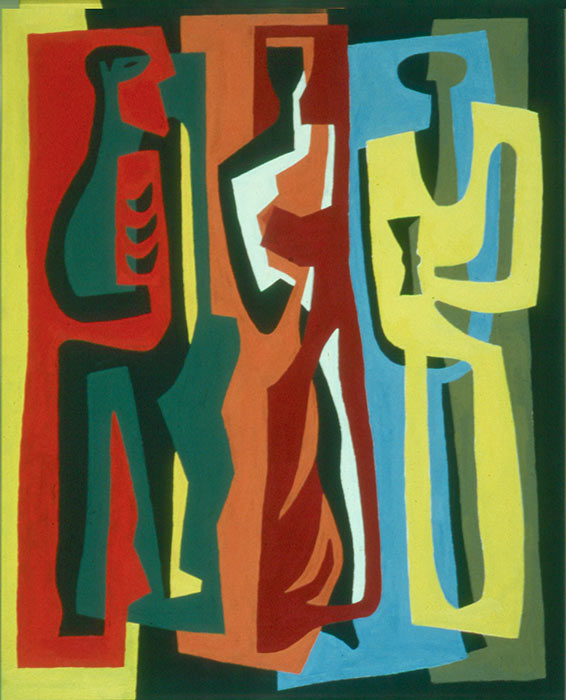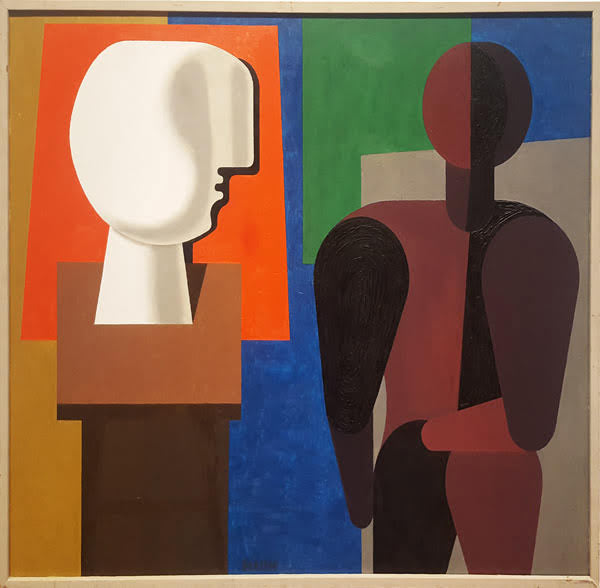Wendell Brazeau
Wendell Brazeau grew up in the “art-impoverished” city of Spokane, Washington, where he was born in 1910. He moved to Seattle in 1928 to enroll in the University of Washington, graduating with a BFA in art in 1933. Brazeau worked a number of odd jobs afterwards, including a stint at Boeing during the war, drawing 3-D perspectives from engineers’ plans. Following the war, he returned to UW to complete his MFA and remained there as a faculty member in the Art Department until his death in 1974.

Allen Center, 6th floor

Gates Center, 3rd floor
Brazeau exhibited frequently in the northwest and California. His work, influenced by his studies and experience with illustration, was often geometrical, with repeated shapes and bright colors. He was also influenced by the European painters of the time; e.g., many of his abstract paintings have a Klee-like quality, and his figures are often drawn in a cubist style using simple lines or curves.
Brazeau’s paintings can be found in the collections of the Seattle Art Museum, the Portland Art Museum, and the Smithsonian Institution in Washington D.C. The Seattle Art Museum held a solo exhibition of Brazeau’s work in 1957.
The Allen Center’s 6th floor houses one of Brazeau’s vivid works, the 1949 oil painting Three Wise Men. This painting was included in the 1974 exhibition “Art of the Pacific Northwest: From the 1930s to the Present” hosted by the Smithsonian Institution’s National Collection of Art. It was also chosen for the 1976 Brazeau retrospective at the Washington State University Museum of Art. His 1958 picture The Sculptor, can be found on the 3rd floor of the Gates Center.
Links
Books
- Wendell Brazeau:A Search for Form, by Spencer Moseley and Millard B. Rogers. University of Washington Press, 1977.
